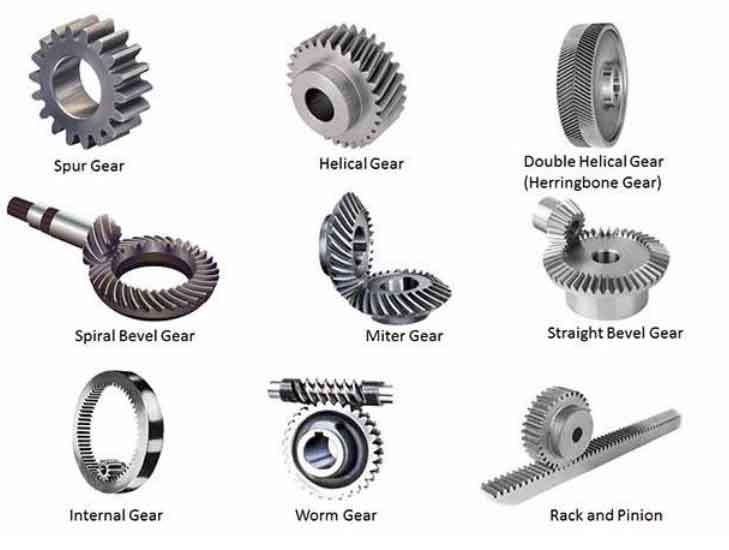Internal gears and rack and pinion systems are both commonly used gear types in various mechanical applications. While they serve similar purposes of transferring motion and power between rotating shafts, they have distinct characteristics and advantages. Here’s a comparative analysis of these gear types:

- Design:
- Internal Gears: Internal gears have teeth on the inner surface of the gear, allowing them to mesh with other gears that have teeth on the outer surface. The teeth are typically cut in a helical or spur configuration.
- Rack and Pinion: Rack and pinion systems consist of a linear gear, called a rack, and a rotating gear, called a pinion. The pinion has teeth that engage with the rack, converting rotational motion into linear motion.
- Motion Transmission:
- Internal Gears: Internal gears are primarily used for transmitting rotational motion between parallel or intersecting shafts. They can achieve a high gear ratio due to the large number of teeth possible on the internal gear.
- Rack and Pinion: Rack and pinion systems convert rotational motion into linear motion or vice versa. They are commonly used in applications such as steering systems, where the rotation of the pinion gear translates into linear movement of the rack.
- Efficiency:
- Internal Gears: Internal gears can achieve high efficiency due to the larger contact ratio between the gear teeth. The load is distributed over multiple teeth, reducing stress and increasing power transmission efficiency.
- Rack and Pinion: Rack and pinion systems can achieve high efficiency when properly lubricated and aligned. However, they may experience more friction and wear compared to internal gears, particularly in applications with high loads or speed.
- Load Capacity:
- Internal Gears: Internal gears have excellent load-carrying capacity due to the larger contact area between the meshing teeth. They can handle high torque and are suitable for heavy-duty applications.
- Rack and Pinion: Rack and pinion systems have a limited load capacity compared to internal gears. They are better suited for applications with lighter loads and where precise linear motion is required.
- Size and Space Requirements:
- Internal Gears: Internal gears generally require more space compared to rack and pinion systems, as they need to accommodate the larger diameter of the external gear. They are commonly used in applications where space is less constrained.
- Rack and Pinion: Rack and pinion systems are more compact and space-efficient since they operate in a linear configuration. They are often preferred in applications where space is limited.
- Precision and Backlash:
- Internal Gears: Internal gears can achieve high precision and have low backlash when properly designed and manufactured. They are capable of providing smooth and accurate motion transfer.
- Rack and Pinion: Rack and pinion systems may have some inherent backlash due to the engagement between the teeth of the rack and pinion. However, backlash can be minimized through design improvements and the use of precision components.
Internal gears are well-suited for applications that require high torque, heavy loads, and precise rotational motion transfer. Rack and pinion systems are more suitable for converting rotational motion into linear motion, especially in applications that require compactness, moderate loads, and precise linear motion. Ultimately, the choice between these gear types depends on the specific requirements of the application, including load capacity, space constraints, motion type, and desired precision.
